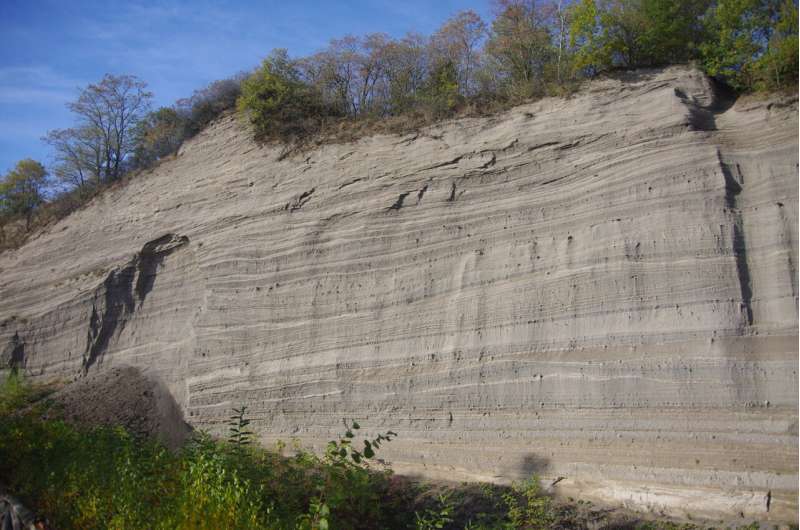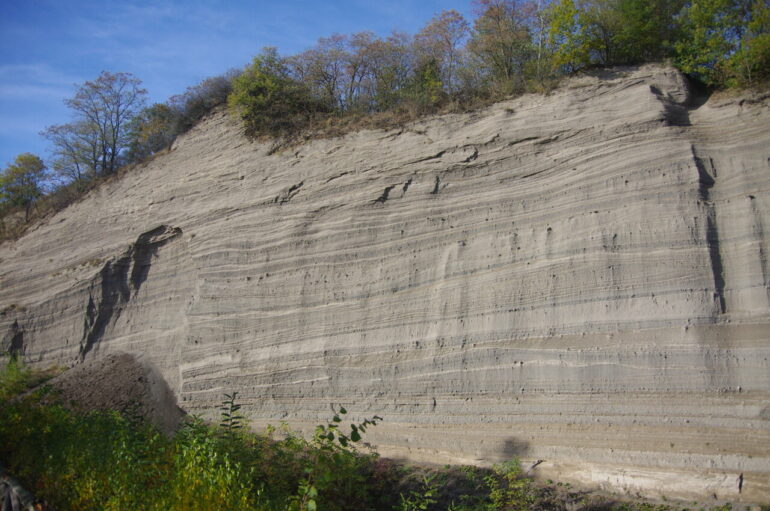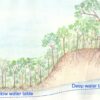In a new study, a group of scientists argue that the new high precision radiocarbon-based date set for Laacher See volcano eruption of 13,000 years before present is probably not correct.
They argue that the correct age of the Laacher See volcano eruption is 12,880 years ago, 130 years after the date presented by Reinig et al., in 2021.
The research team, which included scientists from Durham University, University of Oxford, Royal Holloway University of London, SYSTEMIQ Ltd. and Teesside University suggest that the new eruption date may have been compromised by volcanic carbon. Their research has been published in the journal Nature.
The new date by Reining was produced based on radiocarbon on trees that were caught up in the pyroclastic flows produced by the eruption, very near to the volcano.
Unfortunately, volcanoes outgas carbon dioxide from the underlying magma chamber, which filters through the soil and is absorbed by any vegetation, including trees.
This magmatic carbon dioxide has no radiocarbon in it because it is ancient carbon that has been in the ground for millions of years. So, the incorporation of this dead carbon into the tree will produce a date which will be too old.
Moreover, the researchers point out that there is a newly reported sulfur spike which has just been identified within the Greenland ice sheet (sulfur settles out of the air following an eruption onto the ice sheet surface and is buried by subsequent snow).
The sulfur spike occurred roughly 12,870 years before present time, essentially the same time as the 12,880 years before present date for the Laacher See eruption, again suggesting that the Reinig date is incorrect.

Volcanic deposits. © James Baldini.
The researchers stress that the new date does not coincide with a large sulfur spike.
Reflecting on the study findings, lead author Professor James Baldini of Durham University, said, “Our new study notes that the recent date for the eruption does not consider dead carbon which is emitted by the volcano and is absorbed by trees.
“Therefore, the trees used in the Reinig et al., were contaminated by this volcanic carbon, producing an age that was around 130 years too old.
“This perspective is supported by the presence of a very large sulfur spike found in the Greenland ice sheet with all the characteristics of the Laacher See eruption, dated 130 years after the new Reinig et al., date.
“The eruption therefore is still a viable trigger for the Younger Dryas Event.”
The date of the German volcanic eruption published by Reinig et al., in 2021 is about 130 years older than the previously accepted age.
The researchers point out that previous research shows that magmatic carbon dioxide contributions can produce radiocarbon dates that are between a few decades to 200 years too old, consistent with the 130-year difference between the previously accepted date and the one recently published by Reinig et al.
The Laacher See volcano distributed ash across Europe and spread sulfur across the globe.
The ash resulting from the eruption is widely used as a time marker in sedimentary sequences across Europe, so the timing of the eruption affects the reported timing of environmental change as reconstructed from these European lake cores.
More information:
J. Baldini et al., “Possible magmatic CO2 influence on Laacher See eruption date”, Nature (2023) www.nature.com/articles/s41586-023-05965-1
Citation:
Researchers find eruption date of Laacher See volcano is wrong by 130 years (2023, July 5)



